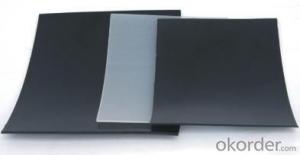Geomembranes, a term that might sound unfamiliar to many, are actually an integral part of the modern construction industry and environmental preservation strategies. These synthetic materials, often referred to as geomembrane liners, serve as containment systems for fluid and gas flow in different scenarios. Let us delve into the world of geomembranes and examine their significance, varieties and uses.
Importance of Geomembrane Liners
Every construction project is built on safety and efficiency. Geomembrane liners play a vital role in achieving these goals. They are used to prevent leakage in water reservoirs, containment ponds, and landfills. The liners act as a protective barrier, ensuring that the environment remains unharmed and the structural integrity of the project is maintained.
Types of Geomembrane Liners
The versatility of geomembranes is evident in the variety of materials they are made from. Examples include:
High-Density Polyethylene (HDPE): HDPE linings can be found in modern landfill sites nad water containment projects because they are durable enough against chemicals.
Low-Density Polyethylene (LDPE): LDPE linings can be best used where flexibility as well as resistance to puncture is required.
Polyvinyl Chloride (PVC): Being resistant to both UV radiation and toxic substances makes PVC liners dependable for outdoor use over long periods.
Applications of Geomembrane Liners
The applications for which geomembrane liners are used are just as varied as their functions. Below are some examples:
Waste Management: Landfill geosynthetics prevent hazardous substances from being released into surrounding environments.
Water Management: Reservoirs and ponds require these membranes so that there’s no evaporation or pollution.
Agricultural Projects: Irrigation supplies controlled conditions for farming while lined areas store rainwater runoffs.
-Construction: Use of geomembrane liners for canal lining and tunnel construction help to minimize water entry into the structure which could lead to structural failure.
Installation and Maintenance
The installation of geomembrane liners is an art and science. There has to be a smooth interface between them. The life of the liner can be extended by maintaining it properly.
Installation: These are rolled out, overlapped, and sealed continuously so that no gaps occur anywhere in the barrier. Where there is need to create watertight integrity, special attention paid to joints and seams.
Maintenance: Liners should be kept clean through regular inspections. Detected damages should be fixed promptly before they escalate into failures.
Environmental Impact
It would not be overstating the fact if we say that the environmental benefits derived from geomembrane liners cannot be overemphasized. They prevent contamination whilst supporting proper utilization of water and land resources hence assisting in preserving nature’s gifts for future generations. Furthermore, most of these barriers are constructed using recyclable materials thus promoting circular economy in society.
Challenges and Innovations
Geomembrane liners have several challenges such as material degradation with time, difficulty handling large areas repairs as well as environmental pollution due to production process among others despite their many advantages. However, companies within this industry strive towards developing new techniques and materials that will enhance durability repairability and sustainable development along the way while addressing such issues.
Personal Reflections
Having seen the effect of dump liners with my own eyes, I can’t help but be amazed at their potentials. They are felt in different industries, from the conversion of simple landfills into environmentally friendly waste management sites to protection of water reservoirs against leakage. The manufacturing processes and installation techniques used for these liners demonstrate our commitment to a safer and more sustainable future.
The Future of Geomembrane Liners
With increasing environmental concerns and growing complexity of construction projects, it is expected that there will be an upsurge in demand for geomembrane liners. In addition, there will definitely be more improvements in materials as well as installation methods so that we can continue breeding geomembrane liners for a better world.
To conclude, geomembrane liners signify much more than just a common building material; it is a representation of our concern for environment and durability of our infrastructure. These liner will play an even greater role in making history as they become better tomorrow through innovation.

